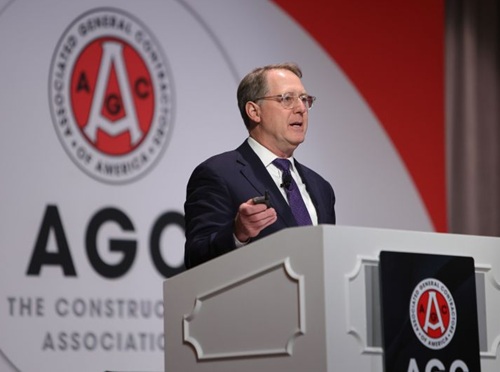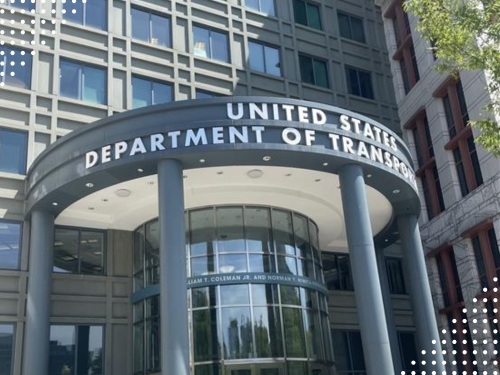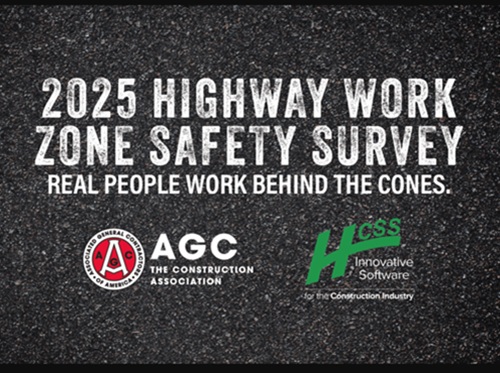According to the results of an annual highway work zone survey conducted by the Associated General Contractors of America and Texas-based construction software provider HCSS, 60 percent of the 600 highway contractors polled reported at least one crash in the past year involving a moving vehicle at highway work zones where they operate; while nearly one-third of firms reported experiencing five or more crashes during the past year.
[Above image by AGC]
AGC added that, among the respondents who reported experiencing a work zone crash, 30 percent experienced crashes that resulted in injury to construction workers, with 13 percent reporting that construction workers were killed in work zone crashes.
[Editor’s note: AGC released a video with its survey detailing the experience of one highway worker who narrowly avoided being killed in a work zone crash.]
However, work zone crashes are nearly twice as likely to result in fatalities to drivers or passengers than construction workers, AGC noted in its report – and 71 percent of the highway contractors in the survey experienced a crash in which drivers or passengers were injured, with 24 percent of respondents reporting drivers or passengers killed in those work zone crashes.
“Every day, tens of thousands of Americans work alongside our highways, often with little more between them and rushing traffic than an orange barrel,” said Jeffrey Shoaf, the AGC’s chief executive officer, in a statement.
“These workers are counting on the traveling public to slow down and pay attention, but too often, the public is letting them down,” he said.

Shoaf noted that 47 percent of contractors report that highway work zones are more dangerous compared to 12 months ago, with another 51 percent saying those risks are the same.
He also pointed out that the survey found 36 percent of contractors believe that the current penalties for moving violations in highway work zones are not sufficient to deter unsafe driving behavior, with two-thirds of survey respondents desiring states to pass stricter laws against cell phone usage and distracted driving in work zones.
In a webinar organized to promote the survey’s findings, Shoaf said that AGC’s annual work zone safety poll “gives us the ability to put finer point on work zone data and the magnitude of the concern out there regarding work zone safety.”
He explained that work zone crashes “deserve a lot more attention than they’ve gotten. This is a priority for us – and we believe technology can help make work zones safer. There is room for growth in that area.”
Steve McGough, president & CEO of HCSS, added that his firm is proud to support this annual work zone survey “because the only way to make a difference on this issue is to provide real data and real stories.”
Increasing work zone safety boils down to three things, he said: “Educating the public, providing better work zone enforcement, and a greater use of technology.”
Jeff Gibson, president & CEO of Gibson & Associates, added on the webinar that “this data is particularly effective with legislators – especially when we break it down by individual districts,” he said. “When they look at this data [about work zones] they are taken aback. It helps us get the message across that this is a major safety issue.”
Michael Gallant, director of HaulHub, said during the webinar that his firm is testing ways right now to automatically transmit construction activity in highway work zones to motorists via Waze and other navigation services.
“Drivers lack real-time signals that work is happening ‘right now’ on the highway,” he explained. “So, two years ago, we launched a pilot project to share voluntarily-offered telematics data from construction equipment to help verify the presence of active highway work zones – then send that data out to state 511 systems, work zone exchanges, navigation devices, etc. Notifications make drivers more aware; reducing the exposure for highway workers.”
In the end, Lane Fouts – the owner and CEO of FoutsCo Paving in Bartonville, TX – said the survey data reinforces the need to create a more intimate partnership between the travelling public and highway contractors out on the road.
“In general, we have a lot of faith that the travelling public will stay in their lane on the road; and me and my guys are trusting the public to drive legally and safely. We have our fingers crossed,” he explained. “Because when the [vehicle] wheel goes just two feet just one way, into our work zone, that is putting our people at risk.”
Fouts added that the “talented individuals” working in the highway construction and maintenance sector are also adept at “getting past the fear” of what is going on behind them on the road so they can focus on the tasks at hand.
“When I get woken up by a 2 a.m. phone call from a project manager screaming [about a work zone crash] on the other end, that gets you out of bed fast. You get shaky hands,” he stressed. “[Work zone crashes] are a fear we all have – but we all fight through it. This is the profession we have chosen.”
 Top Stories
Top Stories
USDOT Makes $1.5B Worth of BUILD Grants Available
December 19, 2025 Top Stories
Top Stories

